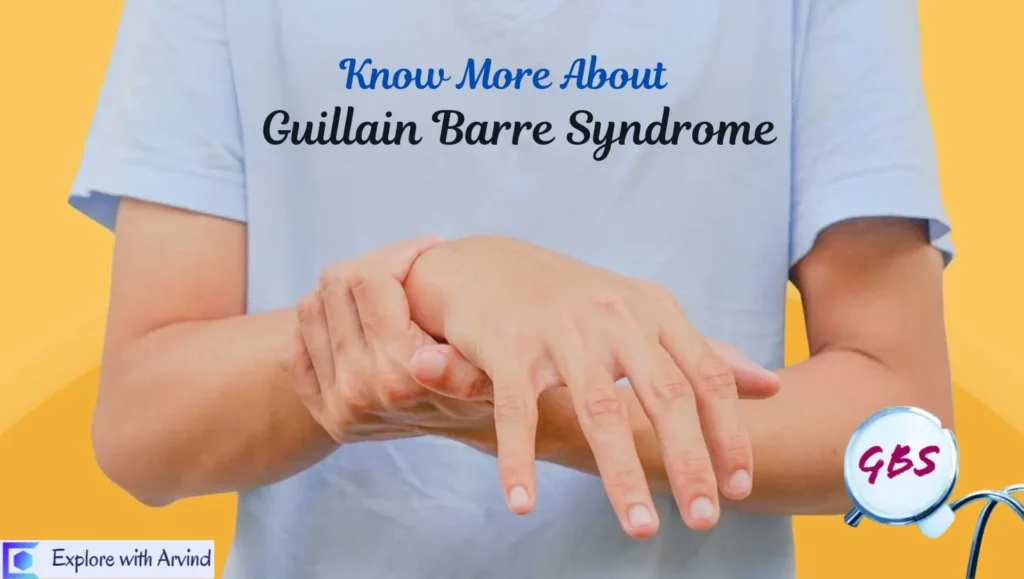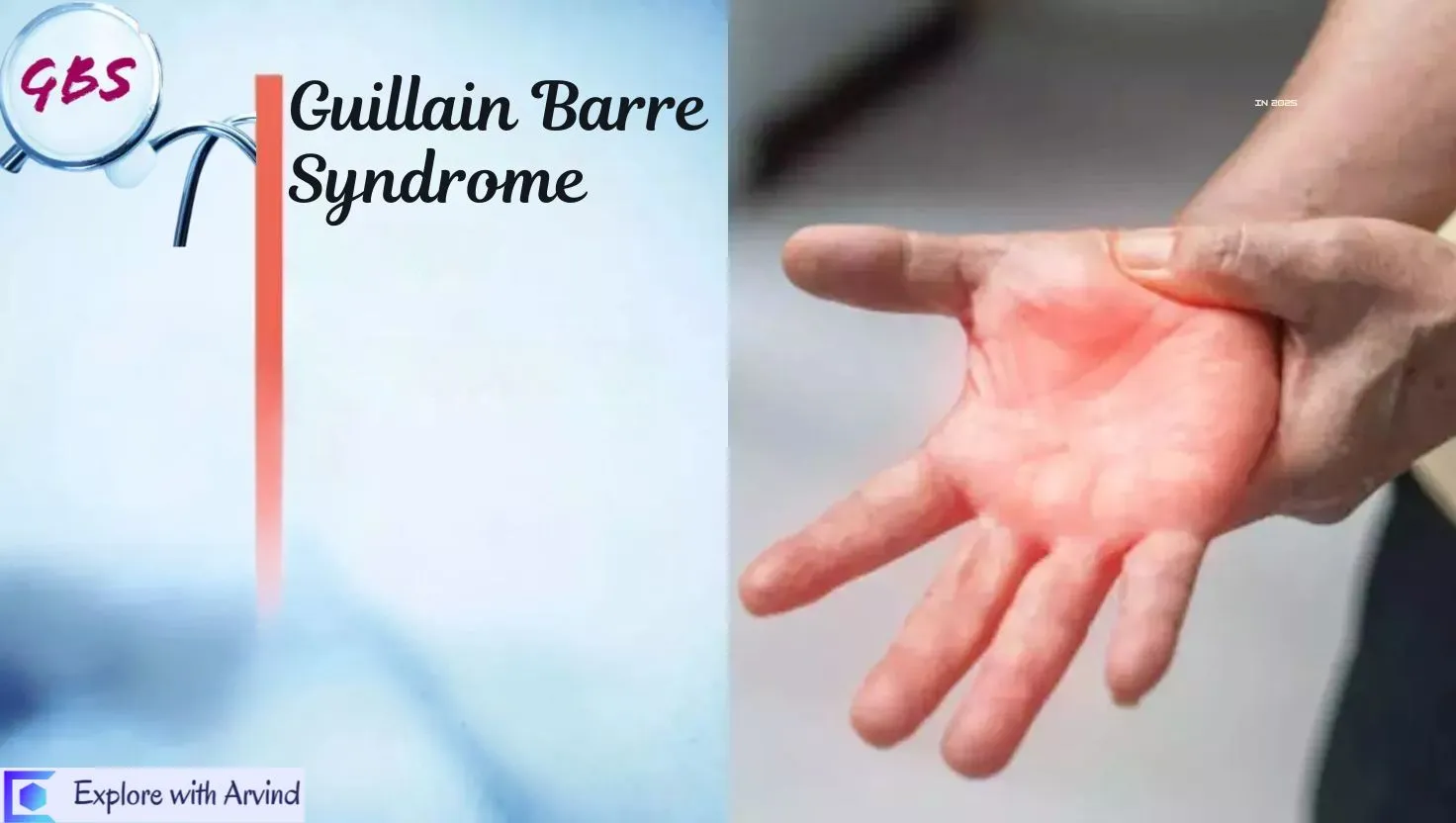Table of Contents
ToggleGuillain-Barre Syndrome Explained: 7 Symptoms and Effective Treatment
Learn about Guillain-Barre Syndrome (GBS), a rare autoimmune disorder causing muscle weakness and paralysis. Discover symptoms, causes, treatments like IVIG and plasmapheresis, recovery statistics, and prevention tips for better awareness.
Introduction to Guillain-Barre Syndrome (GBS)
Guillain-Barre Syndrome (GBS) is a rare but potentially life-threatening autoimmune disorder where the body’s immune system attacks the peripheral nervous system. It is characterized by muscle weakness, tingling sensations, and in severe cases, paralysis. Globally, GBS affects 1 to 2 people per 100,000 annually, making it a rare condition. However, its sudden onset and potential complications require timely medical intervention.
Symptoms of Guillain-Barre Syndrome
GBS symptoms often progress rapidly over days or weeks. They may start mildly but can escalate to severe levels if untreated.
Common Symptoms:
- Ascending Muscle Weakness: Begins in the legs and moves upward to the arms and upper body.
- Tingling or Numbness: Often starts in the extremities like toes, feet, or fingers.
- Loss of Reflexes: Deep tendon reflexes in affected areas diminish or disappear.
- Difficulty with Eye or Facial Movements: Drooping eyelids, double vision, or trouble swallowing.
- Severe Pain: Especially in the back, shoulders, or thighs.
- Breathing Problems: Occurs in approximately 20%-30% of patients, requiring ventilatory support.
- Autonomic Dysfunction: Symptoms include irregular heartbeats, fluctuating blood pressure, or bladder issues.
Note: Symptoms typically peak within 2 to 4 weeks after onset.

Causes and Risk Factors
The exact cause of GBS is still under investigation, but it is widely understood to be triggered by an overactive immune response. About two-thirds of GBS cases are linked to infections or other events.
Common Triggers:
- Bacterial Infections:
- Campylobacter jejuni (associated with food poisoning) is the most common trigger, causing 30%-40% of GBS cases.
- Viral Infections:
- Influenza, Epstein-Barr Virus (EBV), cytomegalovirus, and Zika virus have all been linked to GBS.
- Post-Vaccination:
- Rarely, vaccines (e.g., flu vaccine) have been associated with GBS. However, the risk is extremely low (1–2 cases per million vaccinated individuals).
- Surgical Procedures or Trauma:
- In some cases, recent surgeries or injuries have been identified as triggers.
Epidemiology and Statistics
Global Prevalence:
- GBS occurs in 1–2 cases per 100,000 people per year globally.
- Men are slightly more likely to develop GBS than women.
Mortality and Recovery:
- The fatality rate is approximately 3%–7%, often due to complications like respiratory failure or infections.
- 80% of patients recover fully within 6–12 months, though some experience residual weakness.
- 15%-20% of patients may face long-term complications or disability.
How is Guillain-Barre Syndrome Diagnosed?
GBS diagnosis involves a combination of clinical evaluations and diagnostic tests to confirm the condition and rule out other disorders.
Diagnostic Procedures:
- Medical History and Physical Examination:
Doctors evaluate the patient’s symptoms, reflexes, and progression of weakness. - Lumbar Puncture:
Elevated protein levels in the cerebrospinal fluid (CSF) without an increase in white blood cells are a hallmark of GBS. - Nerve Conduction Studies (NCS) and Electromyography (EMG):
These tests measure the speed and strength of nerve signals, helping to detect nerve damage. - Blood Tests:
To rule out other potential causes of nerve damage.
Treatment Options for Guillain-Barre Syndrome
There is no cure for GBS, but early treatment can significantly improve outcomes. Treatment focuses on reducing the immune attack and managing symptoms.
Common Treatments:
- Plasma Exchange (Plasmapheresis):
Removes antibodies from the blood that contribute to nerve damage. This procedure has been shown to accelerate recovery in many patients. - Intravenous Immunoglobulin (IVIG):
High doses of IVIG can block the damaging antibodies and reduce the immune response. Studies show IVIG is effective in 60%–80% of cases. - Supportive Care:
- Patients often require hospitalization for monitoring.
- About 30% of patients may need ventilatory support due to breathing difficulties.
- Pain management and physical therapy are essential during recovery.
Prognosis and Recovery
While most patients recover fully, the recovery timeline can vary:
- 40% regain full strength within 6 months.
- 60%-80% achieve near-complete recovery within 12 months.
- Long-term complications such as chronic fatigue, pain, or residual weakness are seen in 15%-20% of patients.
Early diagnosis and treatment are critical to minimizing complications and ensuring the best possible recovery.
Prevention and Awareness
Key Preventative Steps:
- Avoid Infections: Practice good hygiene and food safety to reduce the risk of infections like Campylobacter jejuni.
- Vaccination Awareness: Ensure up-to-date vaccines but consult your doctor if you have a history of GBS.
Raising Awareness:
Understanding the symptoms and potential risks of Guillain-Barre Syndrome can lead to earlier diagnosis and treatment. If you experience unusual weakness or tingling after an infection, consult a healthcare provider immediately.
Conclusion
Guillain-Barre Syndrome is a rare but serious neurological condition requiring prompt medical attention. With early treatment through IVIG or plasmapheresis, most patients recover fully within a year. Public awareness, along with ongoing research into its causes and treatments, continues to improve outcomes for individuals affected by GBS.
Remember: While GBS is uncommon, understanding the risk factors, symptoms, and treatment options can help mitigate its impact and promote better long-term recovery. The article is for general understanding and awareness only. Please meet a physician, whenever any such symptom appears. Be aware & remain healthy.
